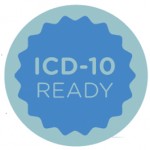The Nachimson Advisors released a revision to the 2008 study on the costs of ICD-10 implementation that projects higher costs than originally estimated for practices of all sizes. The practice definitions were small practice (i.e., three physicians and two administrative staff), medium (i.e., 10 physicians, one full-time coder and six administrative staff) and large (i.e., 100 physicians, 64 coding staff, 10 full-time coders and 54 medical records staff). The updated projections from 2008–2014 include the following:
- Small practice: $83,290 vs. $56,639–226,105;
- Medium practice: $285,195 vs. $213,364–824,735; and
- Large practice: $2,728,780 vs. $2,017,151–8,018,364.
The revised projections are the results of adding in tasks that were not considered “critical” in the 2008 study, which includes testing, as well as projections for payment disruptions.
There is a general expectation that there will be an increase in denied claims and delays in reimbursements as the country gets used to ICD-10. AMA predicts, “You will have disruptions in your transactions being processed and receipt of your payments. Physicians are urged to set up a line of credit to mitigate any cash flow interruptions that may occur.” Planning ahead and having cash reserves on hand to keep business moving while these difficulties are sorted out could make the difference.
Getting Ready
Although the AMA continues to seek a repeal of ICD-10, the overall sentiment is that ICD-10 is coming, and the clock is running out. Many hospital systems, multispecialty groups and physicians’ offices have begun implementation efforts and training for their staff. Those that have not are encouraged to get started quickly.
“It’s still not too late, but we’re almost past the point where if you haven’t started dipping your toe in the water, you’re going to have to jump in all the way,” Dr. King says. “Start working with your vendor to make sure your system is capable of converting to ICD-10. Start participating in webinars or attending educational sessions, for example, the ACR program, to start learning. If dual coding is possible, start doing that now and prepare, so most of your codes are already in place by the time ICD-10 goes live.”
The AMA recommends several steps that need to be taken to prepare for converting to ICD-10:
- Talk to your practice management or software vendor about whether the needed software updates will be installed with upgrades and when;
- Talk to your clearinghouses, billing service and payers to determine when they will have their ICD-10 upgrades completed and when you can begin testing with them;
- Identify the changes that you need to make in your practice to convert to the ICD-10 code set (e.g., diagnosis coding tools, superbills, public health reporting tools);
- Identify staff training needs, and complete the necessary training;
- Conduct testing internally to ensure transactions with ICD-10 codes can be generated; and
- Conduct testing externally with clearinghouses and payers to ensure transactions with ICD-10 codes can be sent and received.
Patient Impact
After the steps have been taken to lay the groundwork for the go-live, another consideration is what to communicate with patients. The code switch will take some getting used to for healthcare providers across the country, so that carries with it the risk that the physician will lose overall productivity.

